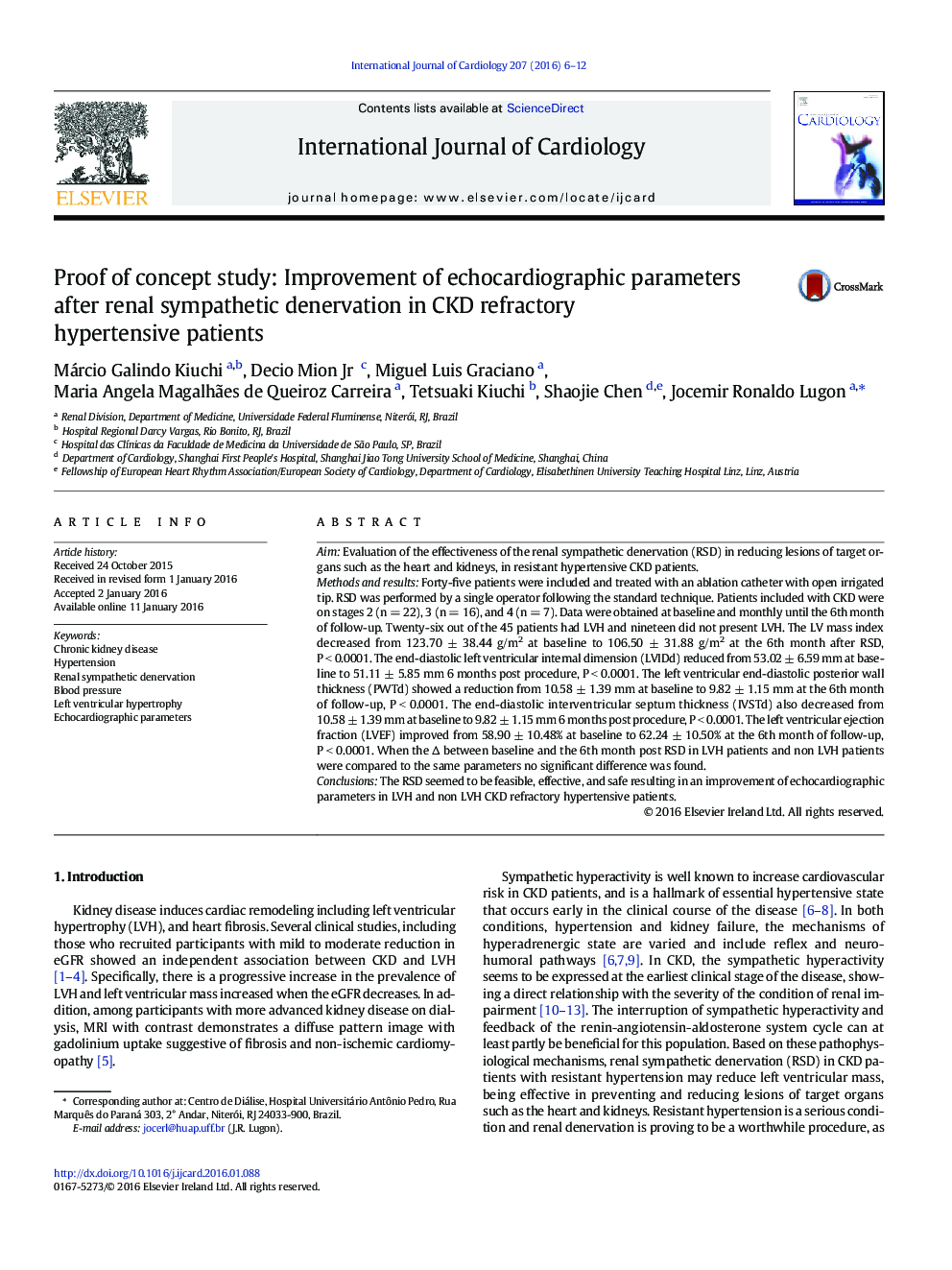| Article ID | Journal | Published Year | Pages | File Type |
|---|---|---|---|---|
| 5964850 | International Journal of Cardiology | 2016 | 7 Pages |
AimEvaluation of the effectiveness of the renal sympathetic denervation (RSD) in reducing lesions of target organs such as the heart and kidneys, in resistant hypertensive CKD patients.Methods and resultsForty-five patients were included and treated with an ablation catheter with open irrigated tip. RSD was performed by a single operator following the standard technique. Patients included with CKD were on stages 2 (n = 22), 3 (n = 16), and 4 (n = 7). Data were obtained at baseline and monthly until the 6th month of follow-up. Twenty-six out of the 45 patients had LVH and nineteen did not present LVH. The LV mass index decreased from 123.70 ± 38.44 g/m2 at baseline to 106.50 ± 31.88 g/m2 at the 6th month after RSD, P < 0.0001. The end-diastolic left ventricular internal dimension (LVIDd) reduced from 53.02 ± 6.59 mm at baseline to 51.11 ± 5.85 mm 6 months post procedure, P < 0.0001. The left ventricular end-diastolic posterior wall thickness (PWTd) showed a reduction from 10.58 ± 1.39 mm at baseline to 9.82 ± 1.15 mm at the 6th month of follow-up, P < 0.0001. The end-diastolic interventricular septum thickness (IVSTd) also decreased from 10.58 ± 1.39 mm at baseline to 9.82 ± 1.15 mm 6 months post procedure, P < 0.0001. The left ventricular ejection fraction (LVEF) improved from 58.90 ± 10.48% at baseline to 62.24 ± 10.50% at the 6th month of follow-up, P < 0.0001. When the â between baseline and the 6th month post RSD in LVH patients and non LVH patients were compared to the same parameters no significant difference was found.ConclusionsThe RSD seemed to be feasible, effective, and safe resulting in an improvement of echocardiographic parameters in LVH and non LVH CKD refractory hypertensive patients.
